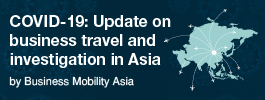Is philanthropy flawed?

Critiqued as a necessary but flawed response to societal issues, philanthropy stands as a mediator of wealth and persistent inequality, prompting a need to maximise impact through calculated approaches
The vast majority of wealth owners and managers recognise some responsibility in the face of the many societal issues locally and globally. Philanthropy is the positive link between the adversarial concepts of wealth and society; wealth invariably, although not always, comes at the expense of society. Philanthropy seeks to mitigate the effects of unfettered growth for the elite with the distribution of wealth and benefits to worthwhile causes.
Philanthropy has been criticised as being fundamentally flawed. If wealth were more equitably distributed and governments had progressive tax systems, the argument goes, then there would be no need for philanthropy, and no need for individuals to fund basic human rights like access to food and water. Put another way, the reliance on philanthropy today highlights extreme and unjust wealth inequality.
Emma Saunders-Hastings, in her book, Private Virtues, Public Vices: Philanthropy and Democratic Equality, Paul Vallely in Philanthropy: From Aristotle to Zuckerberg, or Anand Giridharadas in Winners Take All: The Elite Charade of Changing the World, among others, provide a comprehensive review of prevailing criticisms. The economist Robert Reich argues that wealthy philanthropists are largely unaccountable and invest in areas that reflect personal interests rather than public need.
Criticisms and challenges are understandable from an intellectual perspective since philanthropy is an elitist concept and thus open to controversial viewpoints. However, critical philosophers and politicians are very often guided by different agendas and seek framework conditions of a modern, democratic and egalitarian world, which by definition cannot easily apply to philanthropy.
From the perspective of the recipient and when measuring impact, the criticism becomes much less prescient. Impact is the best argument between those who have concerns and those who wish to make a change. It is also the best motivator for continued giving. The key issue is then how to maximise impact.
Motivation for social change directly correlated to net worth of donor domiciles
In a comprehensive and rather unique research report from Rockefeller Philanthropy Advisors entitled Global Trends and Strategic Time Horizons in Philanthropy 2022, the majority or 78% of respondents representing a wide selection of geographies and structures, cited ‘To influence social change’ as the key motivating factor for giving. This is followed by ‘To give back to society’, ‘To address urgent needs’ and ‘To put values into action’ at around 60% each. All other motivations are very far behind.
The motivation for social change is directly correlated to the average net worth of the donor domiciles. In emerging and developing countries this agenda ranks higher than, for example, in Europe where putting values into action is more prevalent as motivator.
Overall, philanthropy is dominated by the motivation to do something good for underprivileged groups, communities, or society at large. As a consequence, philanthropic investments largely advance the UN’s Global Sustainable Development Goals, according to a Harvard review.

Across $1.5 trillion in endowment, one of the top philanthropic priorities worldwide is education, followed by human services, then social welfare and health. Education is seen as the key to individual opportunity and the engine of national economic prosperity. Arts and culture, poverty alleviation, civil and human rights and disaster response follow at some distance. These priorities hold up in countries around the world, but there are some regional differences.
In Africa, some of the top priorities include advancing civil rights and social entrepreneurship. Throughout Asia, responding to natural disasters is a top concern, while protecting the environment is popular in Latin America according to the Global Philanthropy report published at Harvard Kennedy School in 2018.
Increasingly, however, environmental and climate issues are becoming important to philanthropy. The pressing need for climate and nature action is being felt across the world. In response, governments and companies have been multiplying commitments and actions in areas such as the net-zero transition, biodiversity loss, and broader natural-capital preservation. These have in turn accelerated the momentum for public-private philanthropic partnerships that combine the public sector’s ability to create enabling conditions with the private sector’s scaling ability.
Funding for climate, nature has tripled
For their part, philanthropies are increasingly turning their attention to climate and nature, seeing them as key challenges in their own right and as intimately linked to the core issues of equity and development that have long been at the heart of their agenda (The role of public private–philanthropic partnerships in driving climate and nature transitions, World Economic Forum with McKinsey & Co, November 2023).
The amount of foundation funding dedicated to climate change mitigation has more than tripled since 2015 to reach about $3 billion in 2021 as reported by ClimateWorks Foundation in 2022. At individual donor and high-net-worth philanthropist level, amounts have grown rapidly and total well over $20 billion, for example Jeff Bezos’ $10 billion grant to the Bezos Earth Fund (Indiana University, Lilly Family School of Philanthropy, Tracker 2023).
The overall size of the philanthropy market—foundations, endowments, family structures, corporations and individuals—is impossible to determine but surely comfortably exceeds $2 trillion with some 5% to 10% of such endowments being spent or invested each year. The biggest individual donors reside mostly in the United States and include individuals such as Warren Buffet, Bill and Melinda Gates, George Soros, and MacKenzie Scott (Forbes, 2022). The top 25 collectively donated or committed over $200 billion.
Measuring impact with milestones and metrics
Most donors deploy some form of monitoring and measures of effectiveness. Two thirds of all philanthropic efforts deploy an evaluation of the entire programme and initiatives. Within this approach they evaluate individual grants as to their effectiveness. Few adopted performance metrics (39%) or conducted satisfaction surveys with grantees (35%); only a third assessed their donation programmes on an annual basis, and 5% did not measure the impact at all, according to a Rockefeller report.
Clearly this suggests significant gaps. Some form of monitoring and feedback is essential to maximising the impact of a donation. Equally, the introduction of milestones or metrics plays an important role. The first step to maximising impact is to measure results and to communicate on the results. What gets measured is more likely to be achieved and donations should be considered similar to an investment, not a sunk cost for trying to do well.
One of the less appreciated factors is timing. Accelerating the pace and volume of giving is a critical success factor. A McKinsey article in McKinsey Quarterly in 2002 argues that donors should assess the time value of philanthropy in the same way that an investor does: putting more value on a dollar deployed today than one spent in future. This is important since the average annual spending of endowments has barely changed.
The rational for accelerating the giving-time horizons must be the impact on the cause to which donations are given. Cumulation of further endowment or foundation assets for some future purpose should take a back seat—after all, idle money does hardly any good. With the increasing pace of issues deserving philanthropic support, accelerating spending makes compelling sense. It accelerates impact. What we help solve today is something achieved rather than waiting for a few years to address a then bigger issue.
Advanced steps to maximising impact
An additional lever to further maximising impact is to partner with other donors to go further faster. Donors can collaborate to scale, share expertise and combine diverse networks. They also increase efficiency in monitoring the effectiveness of their donations. The prevailing cottage industry of philanthropy is not the most effective way to maximise impact. It is also quite costly.
To date, the majority of endowments and grants in all areas is controlled by a single source. Across 260,000 foundations in 39 countries covering $1.5 trillion, most operate their own programmes or grant-making (Global Philanthropy Report, Harvard). Many individual or family-based donors build sizeable teams that develop expertise, create new initiatives and deploy grants largely in isolation from other donors. In most countries surveyed, more than half of foundations operate in-house programs and, in some countries, 80% operate their own programmes. While this seems to foster personal fulfilment, it does not maximise impact.
Another aspect is expanding the instruments used. Philanthropy may well include impact investing, loans and other in-kind gifts, scholarships and others. This could add much to the impact of a simple donation or grant.
Striking a balance between general and local efforts
A further step to maximising impact is to invest more in local communities. Already, donors’ preferences are close to home or close to their immediate interests. Some 60% of surveyed corporate philanthropic efforts go towards programmes within their own industry, sector or community (Rockefeller report).
On the other hand, in times of crisis such as the Lebanon explosion or the Ukraine invasion, diaspora cross-border philanthropy rises sharply (Global Philanthropy Tracker 2023, Indian University, Lilly Family School of Philanthropy, 2023). There is a balance to strike between general and more local efforts and the unexpected and urgent disaster relief, even if overseas.
Donors are often drawn to global problems. This is fine and necessary for the largest donors but for most donors of average size, the effectiveness of local support activities is much higher. Some of the COVID-19 activities have refocused on local communities with significant impact. Local philanthropy is more aligned with the general underlying commitment and connection of donors. Increased impact comes from more localised philanthropy and immediate disaster relief.
As another impact strategy, there are often calls to support the public sector instead of going it alone. Given the scale of government resources, the use of philanthropic contributions to augment public sector initiatives and improve the efficacy of government is potentially a high-impact step. It is not for all to collaborate with the government, which may be notoriously difficult to do, but in many instances, it pays high dividends in terms of impact (McKinsey, A Transformative Moment in Philanthropy, May 2020).
Finally, the time dimension plays an important role. Increasingly, philanthropy donations and organisations are time limited. According to the Rockefeller report, the main reason for adopting a time limitation is overwhelmingly the desire to make greater impact by narrowing the focus. Also, the desire to see the impact during the donors’ lifetime plays an important role.
A time limitation increases strategic clarity and focus and a sense of urgency in undertaking the work. Many organisations believe that their work requires on-going, long-term commitment but the benefits of focus and urgency should not be ignored when operating a time-limited model. Long-term commitment is not undermined when choosing multiple and sequential time-limited efforts with improved monitoring and impact assessments. The resulting flexibility allows donors to adjust their strategies not easily possible with long-term commitments.
Philanthropy is growing and increasingly adjusting to donors’ preferences and communities. The number of issues to tackle is growing even faster. Donors need to respond by increasing the speed of disbursements, and focus on the feasible and the timeline of impact. From thinking like an investor and monitoring donations to adopting a range of impact-reinforcement strategies, multiple methodologies and instruments, philanthropy achieve high impact in the short term to any worthwhile cause.
Keywords: Philanthropy, Strategic Approaches, Wealth Disparity, Social Change, Impact Maximisation, Climate Change, Sustainable Development Goals (sdgs), Monitoring And Evaluation, Public-private Partnerships, Time-limited Philanthropy, Local Communities, Cross-border Philanthropy
Institution: Rockefeller Philanthropy Advisors, Harvard Kennedy School, ClimateWorks Foundation, Indiana University Lilly Family School Of Philanthropy, World Economic Forum, McKinsey & Co
Country: US
Region: Asia, Europe, Africa
People: Emma Saunders-Hastings, Paul Vallely, Anand Giridharadas, Robert Reich, Jeff Bezos, Warren Buffet, Bill Gates, Melinda Gates, George Soros, MacKenzie Scott












Leave your Comments